Memorable Hanoi to Laos Experience – Four-wheel Driving to Peaceful Lands!
If it is the first time you have visited Laos, this article is written for you! So now we will introduce you to the experiences of driving from Hanoi to Laos, including tourist attractions, accommodations, cuisine, and so on.
It is very necessary to prepare carefully before you start to travel from Hanoi to Laos. The first thing you need is an itinerary, which can be easily found on the Internet. However, having a suitable and detailed itinerary is not a simple task. You need to know the destinations you want to visit (as well as the basic information such as opening hours, ticket price, and many others), the hostel you will stay in, or the famous and traditional dishes you should not skip. Most importantly, you have to determine the cost of your trip to have a thorough preparation.
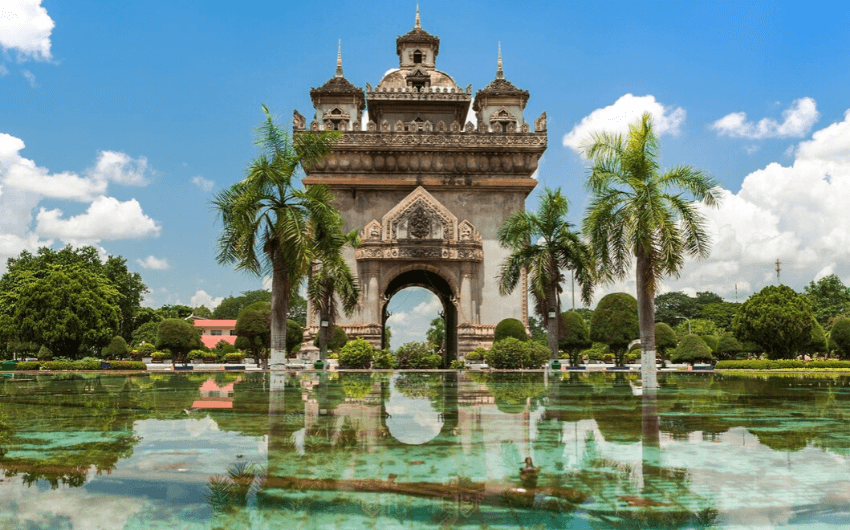
About the car, the procedures for getting transport permission should be done at least 10 days before departure. When submitting the declaration, you need to bring all kinds of the needed documents related to your vehicles, including the photocopy version as well. Note that you should clearly state the border gate of entry and exit as well as the date: allow less than 30 days.
Before the trip, remember to bring these items, including drinking water (bring enough for the entire journey, 1 liter/day for each person), instant noodles, fruits, candies, and medicines. When you come to Laos, an electric kettle will help your trip become more convenient and satisfying.
Prepare enough gasoline, spare tires, tools and vehicle papers.
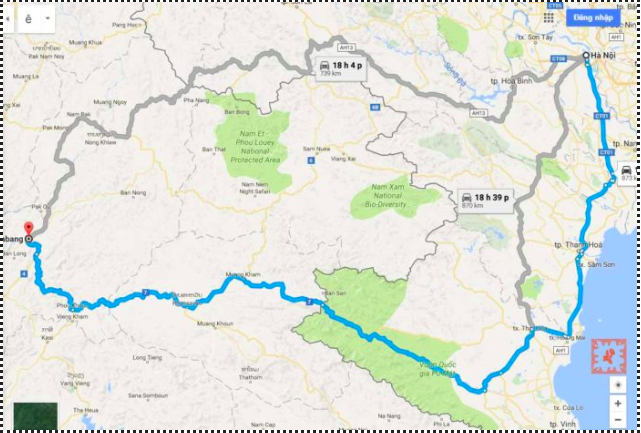
The Route from Hanoi to Laos by car
Note:
You can go from Hanoi or Vinh, but remember that you must reach the Nam Phao border gate around 10 am to complete immigration procedures because it takes a lot of time. After enjoying your lunch at Laksao, you come to Vientiane around 17:00 – 18:00. Do not depart too late because the roads in Laos are very deserted, surrounded by hills and mountains. For safety, you should not wander around Lao at night.
According to Lao law, an international driver’s license is required if you are a foreigner and want to drive in Laos. But if you drive from Vietnam to Laos, this license will not be accepted. For this reason, you need a Vietnamese driver to control the car to cross the border. As long as the vehicle has the passport issued by the Department of Transport, this Vietnamese can pass the Vietnam-Laos borders easily.
HANOI TO LAOS ITINERARY
Day 1: Hanoi – Son Kim (Huong Son, Ha Tinh): 433 km
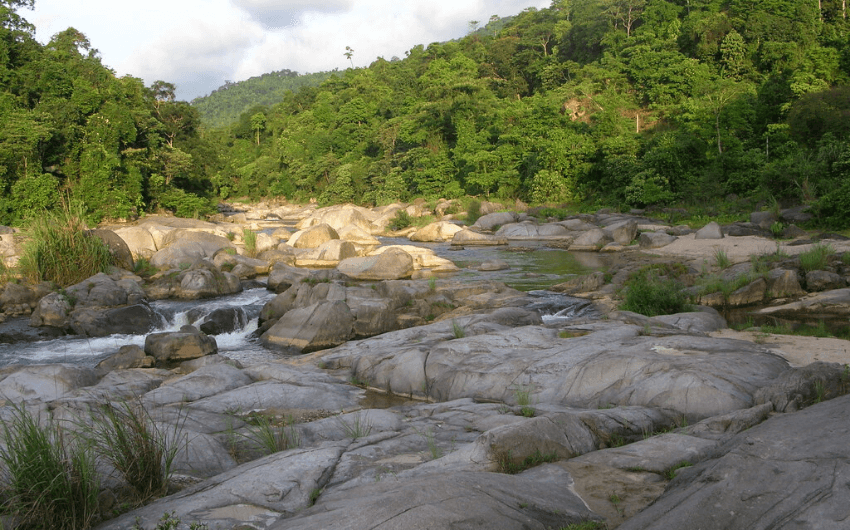
We left Hanoi at 8:00 and moved through Ha Dong, Van Dinh, Te Tieu, Ben Market and Ho Chi Minh road. Running continuously to the territory of Nhu Xuan, Thanh Hoa, to find a place to enjoy lunch and take a break. We got some problems with eating, so what we suggest is that you should eat along the way. If you see any food store that attracts a lot of car drivers, trust me, it will an ideal choice.
Go to Chau Street, turn right onto Highway 8A, fill up your gas tank at the station and continue to Son Kim Ecotourism Area. Take a break to enjoy the dinner and stay overnight. The next day, we go about 20 km and reach the Cau Treo border gate. However, thanks to this journey, we have more valuable experiences for the next trip to Laos.
Let us share it with you! At 13:00, we go forward to Vinh (291 km). Have your dinner in Vinh or Cua Lo. In the morning, go early to the Cau Treo border gate along National Road 46 (go to Nam Dan) to the east of Ho Chi Minh road. This 100-kilometer road takes about 2 and a half hours of driving to arrive at the gate.
If you are interested in 4×4 tours in Vietnam, it is highly recommended to refer to the following
Vietnam motorcycle tours:
- Self-Drive Vietnam 4×4 Tour from Hanoi to Ha Giang – 6 days
- Adventurous Self-drive Northern Vietnam 4×4 Tour from Hanoi to Halong Bay – 12 Days
- Self-drive Vietnam 4×4 tour on the legendary Ho Chi Minh Trail ” 13 days​
Day 2: Son Kim, Ha Tinh – Vientiane (340 km)
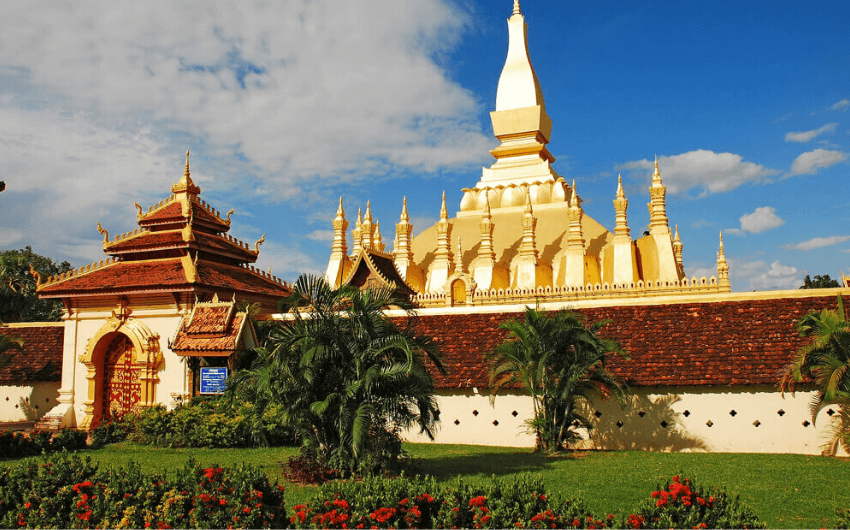
In the morning, have breakfast at Son Kim. The 20-kilometer road along the Cau Treo border gate takes a steep mountain pass. After 30 minutes, reach the gate and finish procedures for the car first. Convert little Lao money to spend on the road. You will need to spend about 30 minutes completing the exit procedure. Drive about 1 km to the Nam Phao border gate (Laos) for entry procedures.
While completing vehicle procedures, the Laos staff will provide you with this document.
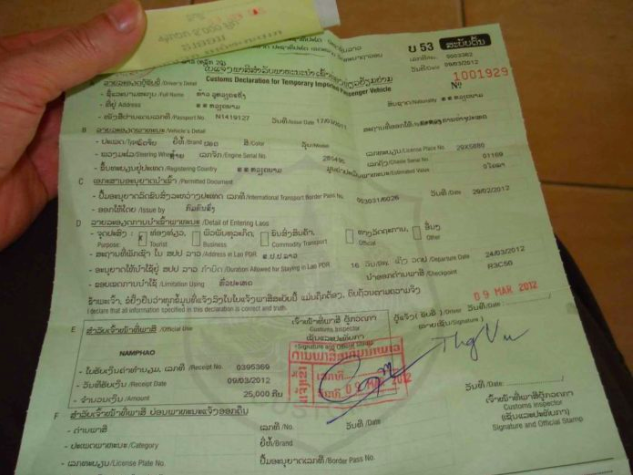
Keep in mind that this paper is essential because when you leave Laos, you have to give it to the customs. If this paper is lost, you will get some problems. After that, you have to buy car insurance. Choosing the insurance package based on the estimated number of days in Laos is advisable. Coming to Laos, it is much easier for you to travel on the roads under good conditions, with less traffic and a sparse population.
Don’t skip a chance to explore the Laksao market and enjoy the traditional dishes here, which bring the distinctive taste of Laos.
Laksao market is a fairly large market located close to the Vietnamese border. If you come across this market, don’t forget to wander around Laksao and buy some Laos souvenirs and goods. Leave the hustle of the Laksao market behind, and your car will go forward to Vientiane.
The next stop is Lasaviewpoint, about 100 km from the border. On the winding mountain road, a spacious wooden house appears in front of your eyes. Visitors can stop to catch sight of the magnificent jagged rocky peaks. We stopped the car to climb to the scenic spot in Lasa, described as the “Thach Lam” of China.
Continue to the junction of the road named Vieng Kham junction, at the intersection of National Road 8 (of Laos) and Highway 13 (of Laos), and turn right toward Vientiane. From here to Vientiane, we need to drive about 220 km. If you are not hungry, you can come to Pakading or Pakxan to have lunch.
Arrive at Pakading Bridge and go straight to Vientiane, about 20 km from which is usually a Lao traffic police station, but we were not checked.
Moving to the center, our group checked in at the Chaleunxay hotel, which is located in central Vientiane. Although the hotel is not new and modern, the surrounding sights are famous tourist attractions. At night, we wander around the Mekong River and explore the night market here. There is a roll of food stalls along the river, where you are free to enjoy the street dishes of Laos.
Day 3: Vientiane
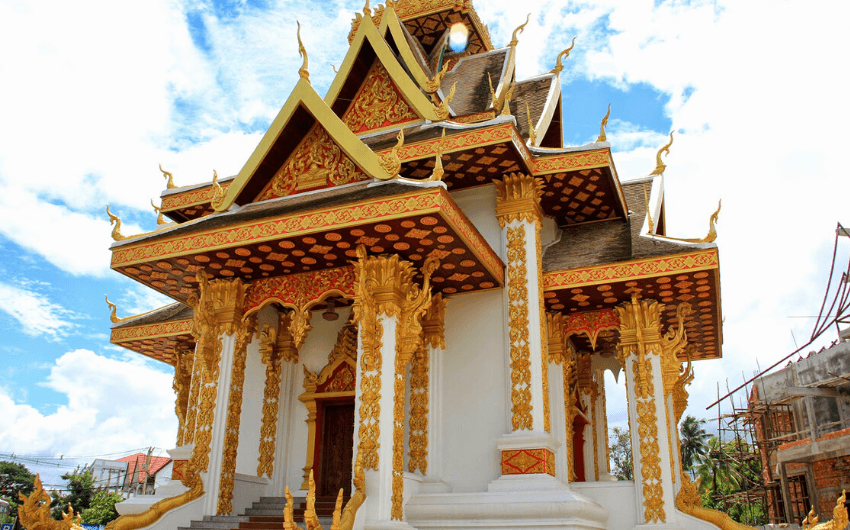
You should use your car to drive around the city and spend the whole first day visiting the well-known destinations in Vientiane.
After having breakfast in the hotel, you will go straight to Simuang Temple at 8:00 am.
Then we returned to Sisaket temple, where you can contemplate thousands of valuable Buddha statues. Surely, you cannot get your eyes off the magnificent panoramic view of HorPhakeo Pagoda, a large temple with an astonishing number of ancient bronze statues. After that, we went a bit further and reached the Buddha garden near the border of Laos – Thai, crossing the Huu Nghi Bridge 2.
We drove about 30 km from the city center to this outstanding garden. Passing over Huu Nghi 2 Bridge, it still takes about 7 km to arrive. Then, you also can visit the duty-free shops near the border gate.
Come back to Vientiane to take a break and have a delicious lunch. If you are a shopping lover, don’t forget to explore the Sang (Light) market, also known as Talat Sao mall.
In the afternoon, you can pay a visit to That Luang – a remarkable symbol of Laos. Patuxai, the most prominent landmark in the city, is definitely worth spending your time and effort discovering. It is an ideal place to take the most stunning photo and contributes to marking your perfect trip to Laos.
Day 4: Vientiane ” Luang Prabang (385 km)
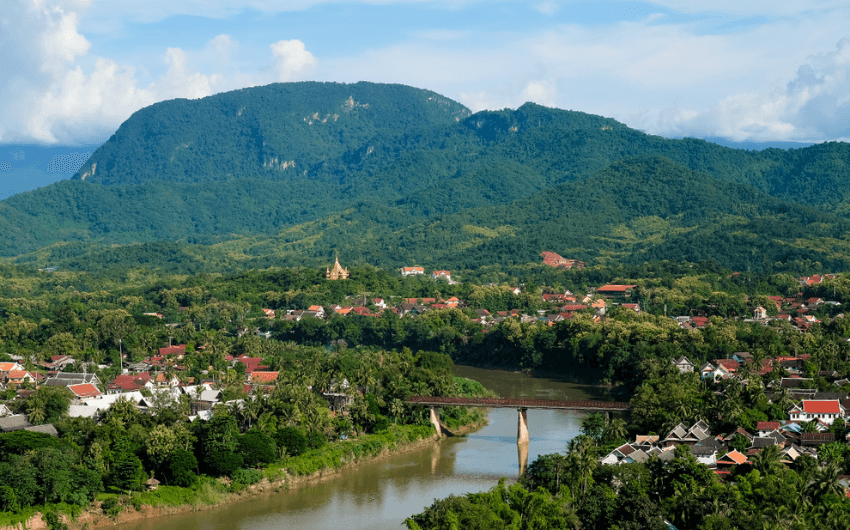
The fourth-day journey from Vientiane follows Highway 13 to the North.
Fill up your fuel tank to make sure that your car can run for nearly 400 km this day. Find out a gas station in the city that only sells two things: gasoline – regular (red) and oil – diesel (green).
Along the way, there are some remarkable stops. The first one is Thahuea village (about 130 km from Vientiane) with the Nam Ngum fish market along National Highway 13. If you are a fan of dried fish, you can visit the bustling market. Continuing the journey, you will find yourself pleasantly overwhelmed by the pristine and pure beauty of Vang Vien town. This famous tourist attraction owns a system of well-decorated homestays, high-quality restaurants, and modern resorts.
From Vang Vieng, we moved about 60 km to Kasi town. After a 220-kilometer run, you should take a break and enjoy your lunch. You can find simple food stalls when coming to this town. These spots serve you with rustic dishes like chickens, fish, vegetables, and eggs. If you require more complicated foods, you can consider a restaurant that lies on the right-hand side at the end of the town. This familiar restaurant has been highly recommended by many groups of visitors.
Leaving Kasi town and moving about 30 km, you will see the viewpoint named Phou Khoun on the left. This place is about 10 km from the Phou Khoun junction (junction of Highway 13 and Highway 7 to Nghe An, Vietnam). From here, you can admire the imposing mountains behind the white cloud that are surrounded by immense green forests. It is a magnificent natural gift that the Creator granted people there. Phou Khoun viewpoint stands on a ridge covering a panoramic view of this picturesque land.
The 120-kilometer road from Phou Khoun to Xiang Ngeun town is full of winding mountain passes; therefore, you have to concentrate on driving. However, don’t worry too much because there are rarely other vehicles as well as the local people here. Occasionally, if you glimpse the Laos girls bathing on the roadside, don’t feel so surprised and continue to focus on your journey. People in this area, especially women and girls, can bathe at any time of the day. That’s strange!
To Xiang Ngeun town, the flat road here allows your car to run at maximum speed. Move about 20 km to set your first step on Luang Prabang. We sincerely recommend that you should not stay at the hotel in this city. The hotel is mostly far from the center and not convenient for eating, playing, and shopping.
In Luang Prabang, you should live with indigenous people to experience the rhyme of local life. They are very gentle, sincere, and hospitable.
After several trips to LuangPrabang, we often suggest Mekong Moon Inn to visitors. As a comfortable guest house, Mekong Moon Inn will help you have a memorable holiday.
Day 5: Luang Prabang
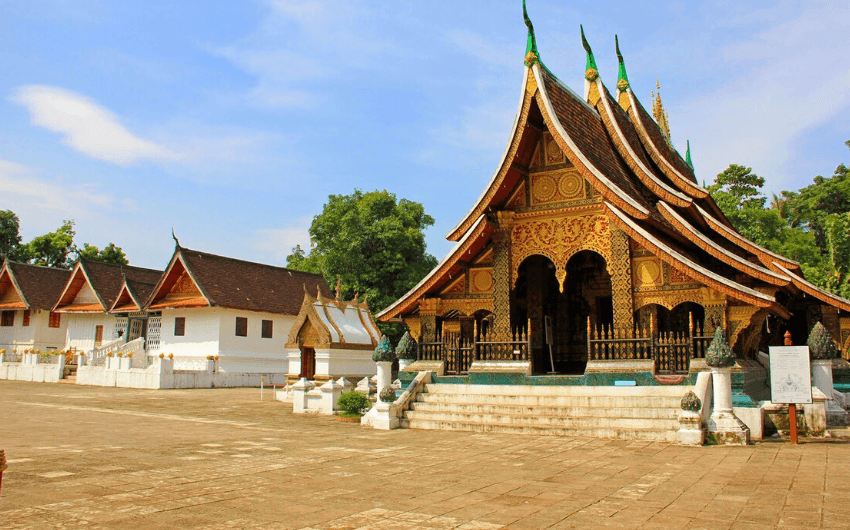
At 5:00 am, we started a powerful day by exploring this glorious city. It was a long yet unforgettable and precious day when we traveled all of Luang Prabang!
As Asian people, we choose WatXieng Thong temple as the first destination. This is considered the largest temple in Luang Prabang. Then, we pay a visit to the Royal Palace (now the National Museum) and the Hawprabang Temple.
We continued our trip by climbing 328 steps to the top of Mount Phusi. From here, you can contemplate the panoramic view of the city and allow yourself a moment to soothe your soul. Finally, go down the mountain and refresh and relax with the tasty Lao beer. Vision Pagoda is the oldest temple in Luang Prabang, dating from the beginning of the 16th century. This is a 34.5m high tower tomb named Tha Pathum.
Another interesting attraction in Luang Prabang is the Kuangsi waterfall. The waterfall area is about 30 km from the city center. To reach this place, it is most convenient to hire a tuk-tuk car carrying from 4 to 8 people. You will need to pay about 200.000 kips. The waterfall area has a large bus station, surrounded by various restaurants as well as different stores.
The entire 50-meter-high waterfall flows into small steps in succession. You can see many people swimming, climbing, or jumping in the stream. Another place to hang out is upstream of the Mekong to Pak Ou cave. Sit peacefully on the boat, contemplate the clear blue water of nearly 30 km, and weave through the islets or large rocks. Along the way, the boat stops for visitors to visit the craft village Ban Xanghai specializes in making Laos whiskey, and Ban Phanom specializes in weaving silk.
Day 6: Luang Prabang – Phonsavan
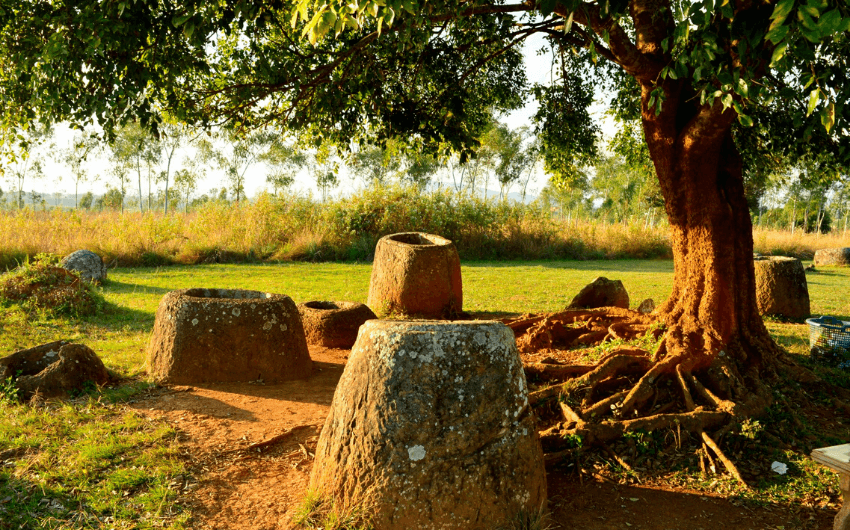
From Luang Prang, return to PhouKhoun T-junction on National Road 13. Go to the junction, turn left to go to National Highway 7 to Phonsavan.
Drive about 5 – 6 hours to pass nearly 200 km to Ban Nam Chat on Highway 7. Between Ban Nam Chat, there is a bridge across a large crystal stream. At the top of the bridge, there is a small restaurant where tourists often rest and have a flavorful lunch. From Ban Nam Chat, the road goes downhill, and then the flat road will appears. You can drive as fast as you want.
Coming to Phonsavan, you should visit the Plain of Jars because this is a famous place in Xieng Khouang as well as around the world. Xieng Khouang has 4 places where many stone jars are concentrated, but only the Ang village’s Jars field is organized as a tourist area (with qualified services). Also, this field has a tremendous number of different sizes of jars.
Go to Phonsavan on Highway 7, and meet the first intersection with traffic lights, which is the only one in Phonsavan. Turn right for about 5 km to Ban Hay Hin, then turn right and go another 2.6 km to Ban Ang Tourist Area.
Day 7: Phonsavan – Nam Can Border Gate (Nghe An) – 130km.
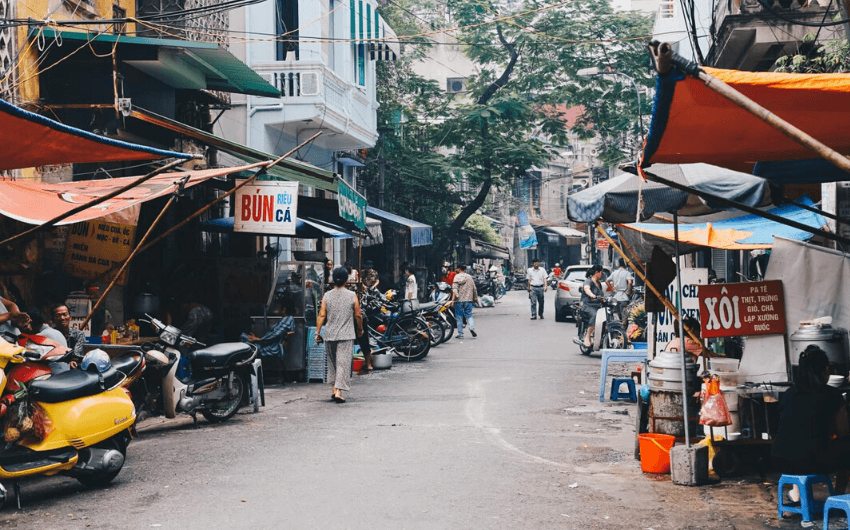 Highway 7 of Laos connects with Highway 7 of Vietnam to Nghe An and runs through many districts, intersecting the east Ho Chi Minh Highway in Anh Son, and crossing Highway 1 in Dien Chau. The road in Laos is very stunning, whose two sides are filled with the splendid Ban flower and the slight fragrance, if you travel in the spring. To Nong Heat town, 17km from the border gate, you can stop at the market to spend the last kip (if available).
Highway 7 of Laos connects with Highway 7 of Vietnam to Nghe An and runs through many districts, intersecting the east Ho Chi Minh Highway in Anh Son, and crossing Highway 1 in Dien Chau. The road in Laos is very stunning, whose two sides are filled with the splendid Ban flower and the slight fragrance, if you travel in the spring. To Nong Heat town, 17km from the border gate, you can stop at the market to spend the last kip (if available).
Coming back to Vietnam, you can stay at Muong Xen (Ky Anh district) or Hoa Binh town (Tuong Duong), Con Cuong, Anh Son town, and so on. And if you still can continue to drive, you should go to Tan Ky (Ho Chi Minh City) or Dien Chau (National Highway 1). The next day, you will come back to Hanoi and have time to enjoy a delicious meal. End the Hanoi to Laos tour. Vietnam motorbike tours club hope that this article can provide informative and useful suggestions to help you have an unforgettable 4×4 tour in Laos.
Contact us for more interesting information
- Address: 3/7/36 Duy Tan Street, Cau Giay District, Ha Noi City
- Mobile: +84 976 024 986
- Email: [email protected]
- Website: https://vietnammotorbiketoursclub.com/
RELATED POSTS
Northern Vietnamese Cuisine – The Quintessence of Vietnamese Culture
Cuisine is a natural cultural feature formed in life, when mentioning Northern Vietnamese cuisine, it is not difficult to recognize the light, delicate flavor and...
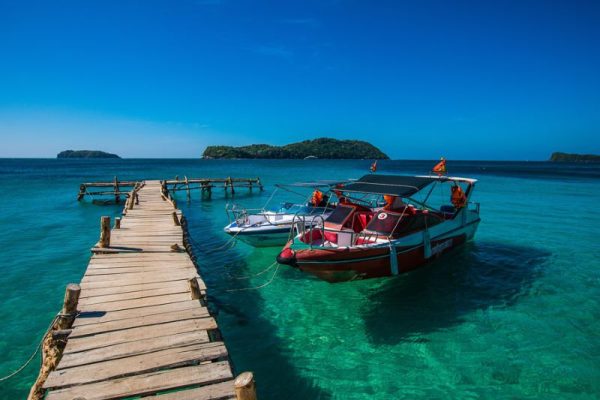
Phu Quoc Island Vietnam: Location, climate and scenery
Phu Quoc is a famous tourist destination, attracting millions of domestic and foreign tourists every year. In this article, Vietnam Motorbike Tours Club will introduce...
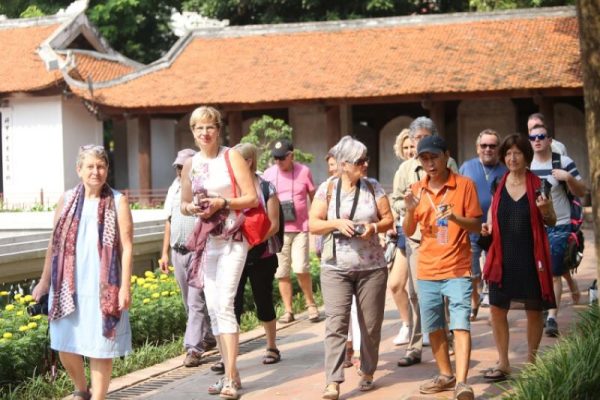
10 common mistakes made by foreign tourists when coming to Vietnam
With its rich history and culture, Vietnam has become an attractive destination for international tourists. However, to have a complete trip and avoid unwanted situations,...




